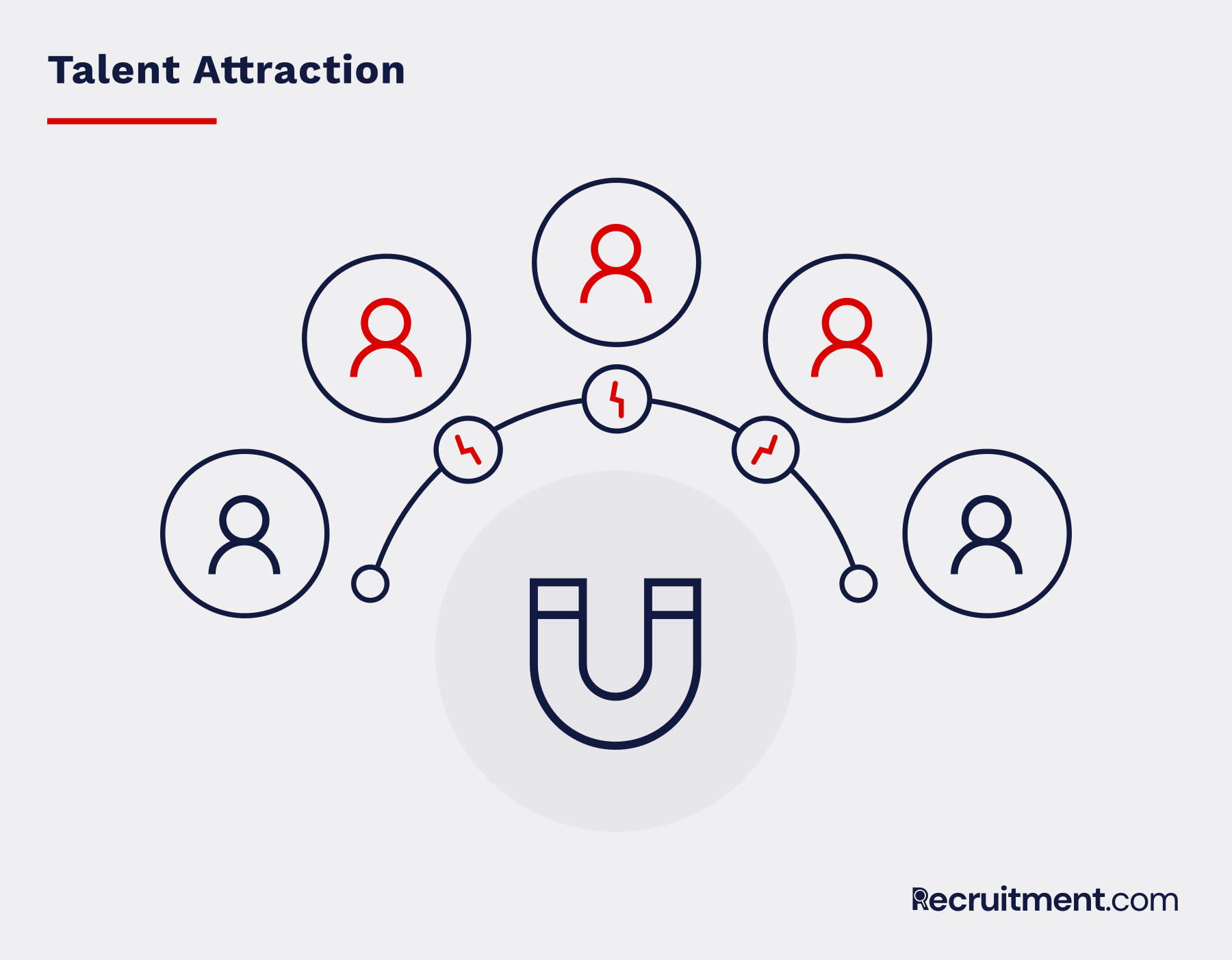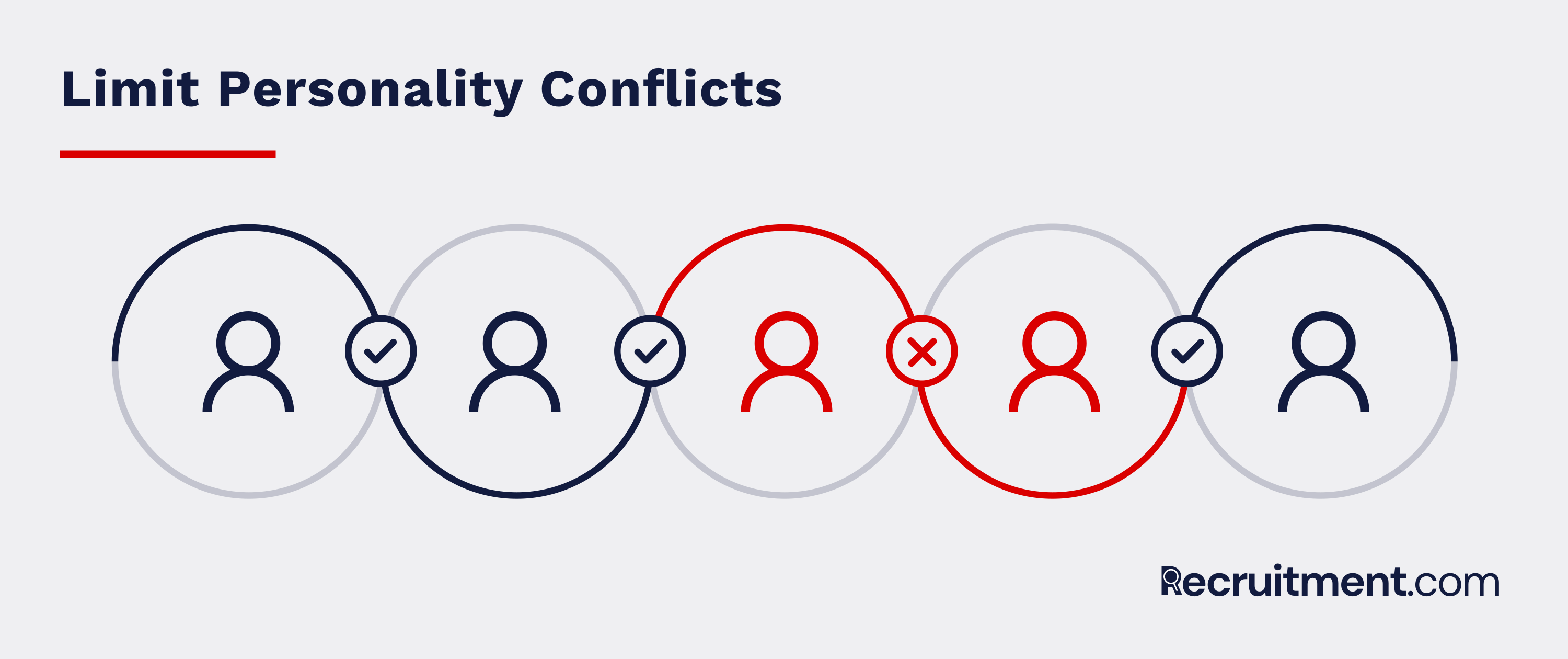What You Need To Know About Talent Attraction

Andrew McDermott is a business book author and writer whose work has been featured in Entrepreneur magazine and Fox Business.
Attracting talent is a never-ending prospect for the majority of organizations. Candidates expect jobs to come to them and they are constantly on the job hunt. How do you take advantage of this and retain the best talent in your organization?
A jury has just ruled in their favor.
A California jury found that 10 former employees at Aon did not violate the terms of their non-compete agreement. These 10 employees left to join an Aon competitor, Alliant Insurance, in 2014.
They took 60 Aon employees with them.
An Aon complaint stated that Alliant Insurance's "recruitment tactics" decimated several of their California offices. After the "alleged poaching," Aon only had a handful of employees left. Certainly not enough to service 9,000 clients and $30 million in business.
Here is the surprising thing about stories like these. They are not always about poaching. They are often about something else entirely.
These stories are about one thing: talent attraction.
The Job Search Never Ends For Candidates
Tara M. Sinclair, Ph.D. and chief economist at Indeed, made an important point about the employee/employer talent search. In her talent attraction study, she shares some alarming statistics on candidates and their career. But there is one factoid that stands out.
For candidates, the job search never ends.
These statistics provide organizations with compelling data that exposes the mindset of your employees. Here are some highlights discussing the data in this report.
- 90 percent of employed adults hired in the past year began their job search six months prior to being hired
- 71 percent of people in the labor force say they are actively looking or open to a job
- 65 percent of employees look at new jobs again within 91 days of being hired
- 50 percent of employees who make $100K to $110K look at new jobs again within 28 days of being hired
- 72 percent of employed adults agree it is important to be aware of jobs currently available in the market, whether they are employed or not
- 58 percent of adults search for a new job monthly
- 44 percent of adults subscribe to job alerts
Why are candidates drawn to a new job? The top three reasons driving this consistent level of talent attraction?
- Good pay/compensation (77 percent)
- Flexible hours (54 percent)
- Good location (51 percent)
Are employers aware of their employee's never-ending job search? Absolutely. Ninety-one percent of employers agree people are always keeping an eye on the market. Eighty-five percent of employers state "highly skilled workers" are more likely to keep an eye out for new job opportunities.
This webinar breaks down the results.
When it comes to talent attraction, this webinar offers a comprehensive look at the need-to-know details driving candidate response.

Talent Attraction Is Always Happening
Attracting talent is a never-ending prospect for the majority of organizations. Candidates expect jobs to come to them (via mobile alerts, recruiters, job boards, etc.). Candidates today take a mobile-first approach. Here is how employed candidates approach the decision-making process.
- Consider a change: Candidates are motivated by triggering events; these can be internal to the organization or external components of your employee's personal life. Triggering events can include an unpleasant social situation at work, marital issues, trouble with a manager, etc.
- Consider your company: The biggest obstacle to candidate attraction? Knowing what it is like to work for your organization. Research from LinkedIn shows great employee branding produces 50 percent more qualified applicants, 1-2x faster time to hire, a 50 percent cost-per-hire reduction, and a 28 percent reduction in the organization's turnover.
- Consider a position: As we have previously discussed, the top three attractors are good pay/compensation, flexible hours, and good location. There is obviously more to it than that. It is important to identify the right mix of considerations, incentives, rewards, and amenities. You need to identify whether your organization provides the right growth and impact opportunities. These are the details that motivate candidates to consider your offer more carefully.
- Apply: Candidates have to commit to the application process. Applying requires that candidates share their CV, list references, and share contact information; this requires a significant shift in the mindset of candidates. Once they have begun the application process, they have pictured themselves in the role you have presented.
- Commit to the process: This stage requires candidates to begin scheduling job interviews, sharing information with their employers and managers. It requires third-party involvement and a willingness to own the fact that they are looking to move on from their current employer. The fact that some employers or managers treat their soon-to-be employee poorly adds to your candidate's stress levels.
- Accept the offer: Your candidates have accepted your offer. This career change adds a significant amount of stress. But it also means employers have a significant amount of wooing to retain their new hire. Remember, employees begin looking for a new job within 28 to 91 days after being hired.
- Appear at the new job: Your new employees will experience a degree of transitional pain as they work. At this point, employees are looking to do two specific things: verify or falsify your employer branding claims. If new hires see a mismatch they may begin their job search sooner than expected. Onboarding and integration improve the odds that new hires will stay with your organization.
Optimizing your candidate's decision-making process provides you with a framework to attract and retain both active and passive applicants.

What Will Bring and Keep Talent At Your Organization?
Talent attraction consists of two essential components, attraction, and retention. Recruiting takes place via direct and indirect means.
1. Consistent recruitment creates stability
SHRM shares an effective model for recruitment. This recruitment model refers to the collective set of strategies and tactics in the attraction and recruitment process. These recruitment topics are as follows:
- Establishing recruitment criteria. This step refers to workforce planning tasks such as: establishing the number of positions to be filled. Setting fill dates for each position. Determining applicant type and performance goals for new hires.
- Identifying who should be recruited. This outlines the type of employee (e.g., entry-level developer, level IV accountant, salesperson, etc.) as well as the required knowledge, experience, and qualifications needed for the role.
- Reaching target candidates. Identifying online (e.g., Indeed, Monster, CareerBuilder, etc.) and offline (e.g., job or career fairs, luncheons, etc.) platforms that provide organizations with ready access to target candidates.
- Determining timeframes. When and where to pursue candidates.
Collecting this data upfront provides your organization with the objectives, strategy, activities, and results needed to attract, recruit, and retain talent successfully. As we have seen, your candidate's job search never ends.
What does this mean for your organization? Employee recruitment should be an ongoing and never-ending process that coincides with workforce planning.
2. A-players attract more
Topgrading, an empirically proven hiring methodology by Dr. Bradford Smart, shows organizations how to attract A players systematically.
What is an A player?
Smart defines an A player as the top 10 percent of talent available for any job, at a given salary.
Why is this significant?
Jim Collins, in his book, Good to Great, states: "Those who build great companies understand that the ultimate throttle on growth for any great company is not markets, or technology, or competition, or products. It is the one thing above all others; the ability to get and keep enough of the right people."
Dr. Michael Lorence at Georgia State University reinforced this point in his research The Impact of Systematically Hiring Top Talent: A Study of Topgrading as a Rigorous Employee Selection Bundle. What does Topgrading have to do with talent attraction? Employees refer candidates to your organization.
Here is why this is noteworthy.
Employees attract candidates who are just like them. If your organization is filled with B and C player employees, you are far more likely to attract B and C player candidates. Likewise, if your organization is filled with A players, you are far more likely to attract more A players.
Why does that matter? A players motivate poor performers to improve or leave. Optimizing for A players means it is easier to attract and retain A players across multiple departments in the future. Increase productivity, and you increase profitability, creating a virtuous cycle.
3. Build a virtual bench
A virtual bench is nothing more than a network of two dozen people who are prospective candidates (people you may hire) or connectors who have ready access to the right people, at the right time.
Building a virtual bench is crucial.
It enables you to attract a steady flow of candidates without having to spend a significant amount of money on job sites That's also important because, according to the Indeed study I mentioned previously, candidates aren't eager to rely on someone else:
- 64 percent of adults say they would feel more confident that a job is the right fit if they picked the company and applied versus a recruiter contact them.
- 52 percent state they would be more successful in a job they found on their own.
- 78 percent agree that if a recruiter or friend contacted them they would consider other job options as well.
A virtual bench provides more candidate traffic to your organization, at a lower cost.
4. Limit personality conflicts
Robert Sutton, Stanford professor and author of the book, The No Asshole Rule: Building A Civilized Workplace And Surviving One That Isn’t, states assh*les decrease morale and productivity in an organization.
Workers with bad managers leave their jobs at accelerated rates.
A survey of 180 employees by Professor Wayne Hochwarter et al. at the University of Florida found there is a significant cost to assh*les in the workplace. According to Hockwarter:
- 30 percent of employees slowed down or made errors
- 33 percent confessed to not putting in maximum effort
- 27 percent purposely hid from their boss
A recent study found "73 percent of the witnesses to bullying incidents experienced increased stress and 44 percent worried about becoming targets themselves." Assh*les sap organizations of their morale, productivity, and results. Employee engagement declines rapidly as employee's at-work experiences deteriorate. Retention becomes difficult employees do their best to flee problem organizations. A players are superstars, so they are quickly snatched up by competitors. B and C players stay until a better opportunity comes along but fail to meet performance and productivity expectations.
Here is where this problem gets worse.
A small but vocal portion of these ex-employees write scathing reviews on Glassdoor. These wave of (negative)reviews affect an employer's brand, making it difficult to attract and convert new A-player hires. Advertising becomes more expensive as candidates are leery of these organizations and their reputation, choosing to stay away.

5. Make employees comfortable
There's a simple question managers want a definitive answer to. Why do employees stay with their organizations in the long-term? It is all about inertia. Employees tend to remain with a company until an external force causes them to leave.
Employees, according to the Harvard Business Review, stay for two distinct reasons.
First, there is a measurement of job satisfaction. Second, there is the company environment and how comfortable employees feel inside that environment. Good onboarding and social integration improves an employee's tenure and longevity in your organization.
Here's a direct quote from the Harvard Business Review.
"An employee’s inertia is strengthened or weakened by the degree of compatibility between his own work ethic and the values for which the company stands. The employee’s ethic derives from his own values and the actual conditions he encounters on the job. The company’s values derive from societal norms, formal decisions by the board of directors, and the policies and procedures of the managing group. A widening gap between these two vantages weakens inertia; a narrowing gap strengthens it."
A key component of attracting talent is keeping it. Your organization's ability to keep its existing top tier talent determines whether you'll be able to attract and retain A players. Employee inertia has a direct impact on your brand as an employer. This inertia seems to be the driving force behind new hires attempts to verify or falsify employer branding claims.
Employers can use employee inertia to keep, then attract talent.
There are two ways to approach the problem. First, you can strengthen employee inertia by integrating employees into your organization's culture. This can be done in a variety of ways, including: onboarding new hires, social integration, employee buddy systems, etc. Second, you can work to eliminate or reduce elements that weaken employee inertia (e.g. isolation, toxic or dysfunctional employees/team dynamics, micro-managers, etc.)
Relationships are the key to strengthening employee inertia so it works in your favor.
6. Peaches and coconuts
German psychologist Kurt Lewin divided the world's cultures into two categories.
Peaches and coconuts.
Oliver Burkeman, a writer at The Guardian, describes this cultural distinction. "Peach people are soft on the outside, immediately friendly and familiar, but if you mistake that for real intimacy, you'll soon hit the hard stone that protects their inner being. Coconuts have tougher exteriors, but get past that, and they're sweet inside. Americans, according to stereotype, are peaches; the French, like the Russians and Germans, are coconuts."
What does this mean?
Peaches tend to be warm, friendly, and inviting with new acquaintances. Coconuts, on the other hand, tend to be cold, closed off, and disinterested, warming up over time as they get to know those around them.
How does this impact talent attraction?
America is a mix of cultural enclaves. While America is predominantly peach, there are large enclaves that are coconuts. Multiculturalism, while hugely beneficial, also creates the potential for misunderstandings and disagreements, the kind that produce lasting damage to relationships.
Erin Meyer, professor at INSEAD, discussed a story to reinforce the point.
Igor Agapov, a Russian colleague, was equally surprised to experience the pit of the peach on his first trip to the United States: 'I sat next to a stranger on the airplane for a nine-hour flight to New York. This American began asking me very personal questions: Was it my first trip to the U.S., what was I leaving behind in Russia, had I been away from my children for this long before? He also shared very personal information about himself. He told me he was a bass player and talked about how difficult his frequent traveling was for his wife, who was with his newborn child right now in Florida.
In response, Agapov started to do something unusual in Russian culture. He shared his personal story thinking they had built an unusually deep friendship in a short period of time. The sequel was quite disappointing:
“I thought that after this type of connection, we would be friends for a very long time. When the airplane landed, imagine my surprise when, as I reached for a piece of paper in order to write down my phone number, my new friend stood up and with a wave of his hand said, 'Nice to meet you! Have a great trip! And that was it. I never saw him again. I felt he had purposely tricked me into opening up when he had no intention of following through on the relationship he had instigated."
Imagine if this interaction was business related? It's easy to see how cultural distinctions like these produce unnecessary damage to relationships.
When it comes to retaining talent, organizations can look for key distinctions where cultural differences or simply a difference in social norms may produce a harmful impact on relationships. Cultural differences include:
- Social class distinctions, i.e., laborers vs. executives and the personal biases, false beliefs, and cultural clashes that exist between both groups.
- Cultural distinctions. Candidates with multicultural or atypical backgrounds (i.e., coconuts in a peachy organization) may require more patience, understanding, and care.
- Power distance. Depending on your candidate's background, speaking up or communicating clearly may not be an easy or likely proposition. Cultural enclaves with higher power distance conform more rigidly to hierarchical concerns, i.e., everyone has a place, and they are expected to know their place.
See the difference?
Accounting for these differences isn't a complicated endeavor. It simply requires two ingredients.
- People and organizations are aware of the cultural norms around them.
- People and organizations can discuss these cultural norms.
Additional factors like training can be helpful, but an emphasis on relationship building and caring produces excellent results at scale. It is easier to work with a manager who violates cultural norms if you know he is working to improve and has no ill intent.
This all boils down to creating a company culture that is honest and transparent.
Conclusion: Attraction and Retention
It all boils down to attraction and retention.
As we have seen, a candidates job search is never-ending. The data shows employees are always on the lookout for something better, even if better adds significant stress to their lives in the short term.
While candidates are looking for good pay/compensation, flexible hours, and location preferences to be met, they want more. Employer branding is an effective way to lure candidates to your organization, but candidates will immediately begin to verify or falsify your branding claims.
What does this mean for employers?
Optimizing your candidate's decision-making process provides you with a framework you can use to attract and retain active and passive applicants consistently. Your employees are attractors themselves, so an effective talent attraction plan is one that seeks to attract and retain top tier talent.
With good workforce planning and an emphasis on attraction and retention, you'll find you can create a virtuous cycle that draws A player candidates in naturally, no poaching required.
- What are your best tips on talent attraction?
- Have personality differences impacted your recruiting?
- How are you attracting A-players to your organization?

Andrew McDermott is a business book author and writer whose work has been featured in Entrepreneur magazine and Fox Business.







